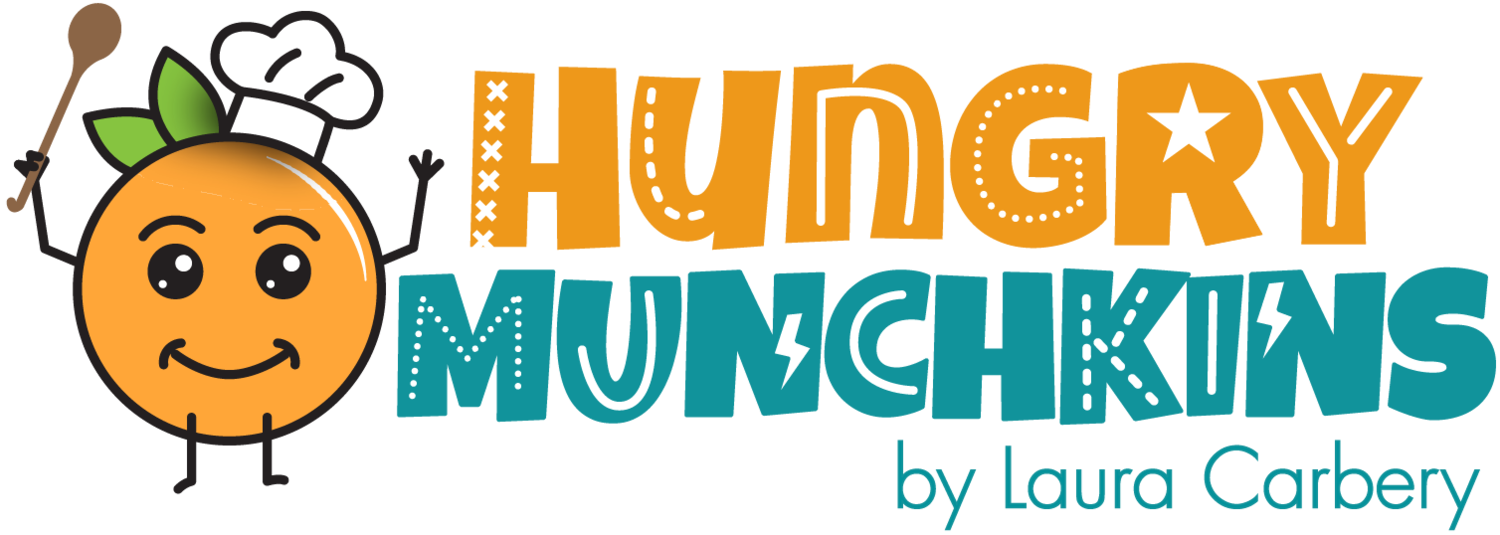Understanding Food Labels
Tips for Reading A Baby Food Label
By Laura Carbery of Hungry Munchkins
Reading and understanding food labels can be confusing and misleading when you’re trying to pick jars, pouches or snacks for your baby or toddler.
This can make food shopping really overwhelming when you’ve no idea what might be suitable or not. Not all ready-made products are the same. Some are healthier options than others. I’ve put together some of my top tips about reading food labels which I hope will break down what you need to look out for when choosing ready made foods for your baby.
What to look out for when choosing pre-made food for your baby or toddler?
1. Check the Ingredient List
Check the ingredients list on the back of the packet to see if it reflects what you would expect to be in the product.
Ingredients are listed in order of how much of each ingredient in the product. The most common ingredient with the HIGHEST amount must be listed FIRST. For example, a beef casserole: you’d expect the ingredients to be listed something like: beef, potatoes, carrots, stock, herbs. Avoid choosing a beef casserole that is 60% apple puree.
Check that the name of the product is reflective of what is in the ingredients list too: So, for example if the front of the pack says “Carrot, Peas and Pears" on the front, but the ingredient list starts with pears, it means pear is the main ingredient.
Look out for added sugar and salt in the ingredients list. Sometimes this can be hard to see as the front of the pack might say ‘no added sugar’ but they may be sweetened with ‘fruit purees’ or ‘fruit juice concentrate. These fruit sugars count as ‘free sugars*’ which is just like adding simple table sugar to your food. Processed fruit sugars are absorbed in the same way as table sugar. See further information about free sugars below.
2. Read the Nutrition Information Panel
Nutrition information can be found on the back/side of food products. Sometimes you will also find a snapshot of this information on the front of pack using a traffic light system. This colour coding helps to show if a food is high, medium or low in sugar, salt, fat, saturated fat. Choosing a food that is low in sugar, salt, fat and saturated fat is the best choice for babies and little ones.
A) For babies and toddlers, the main thing to look for on the nutrition panel is salt and sugar content.
The WHO (World Health Organisation) recommends that children under four eat as little ‘free sugar’ / added sugar as possible. 4g is about 1 tsp of sugar. Sometimes a yogurt or a fruit type snack could have 30g of sugar quite easily.
Look for the carbohydrate on the label, and refer to the words ‘of which sugars’ and see how much sugar the item contains per 100g
More than 22.5g per 100g is high
Less than 5g per 100g is low
The recommended total daily salt intakes are:
Up to 6 months <1g salt per day (0.4g sodium)
7 months – 12 months 1g salt per day (0.4g sodium)
1-3 years 2g salt per day (0.8g sodium)
4-6 years 3g salt per day (1.2g sodium)
7-10 years 5g salt per day (2g sodium)
Children over 11 years 6g salt per day (2.4g sodium)
B) Check the per 100g column
Nutrition information is displayed per 100g and sometimes per recommended serving. This portion size or recommended serving is often set by the food producer themselves and might not be a realistic portion size for your baby. Try to think on average what portion size your baby or child might eat and gauge roughly how much sugar or salt might be in an average portion for your baby?
C) Check the amount of ingredients.
If the product has lots and lots of ingredients in it that you don’t even understand, it’s probably best to choose something else. Try focus on natural ingredients that you would use yourself at home.
I hope this helps for when you’re navigating the supermarket aisles trying to pick suitable foods for your family.
Any questions at all, please feel free to send me an email laura@hungrymunchkins.ie,
Laura x
*What are free sugars?
Free sugars are simple sugars added to foods by the manufacturer or consumer. They are also sugars that are naturally present in honey, veg & fruit juices, smoothies, purées and date, maple and agave syrups. These are different to those found naturally in foods such as the milk sugar lactose, found naturally in milks/ milk products and the fructose, the fruit sugar found naturally present in whole fruits.
Become familiar with the different names used for sugar on labels. These are glucose, sucrose, maltose, corn syrup honey, invert sugar, hydrolysed starch and fructose. The higher up on the ingredients list any of these sugars are then the more it contains in the products.






